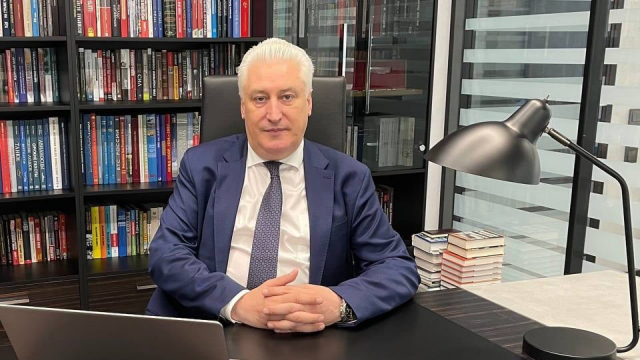The training of strategic nuclear weapons showed the Kremlin's willingness and political will, said the editor-in-chief of the National Defense magazine
MOSCOW, October 22. /tass/. The training of strategic nuclear forces under the leadership of the Supreme Commander-in-Chief of the Armed Forces of the Russian Federation, Russian President Vladimir Putin, showed the Kremlin's political will to use these weapons to ensure the security and defense of the country. This opinion was expressed to TASS by military analyst, editor-in-chief of the National Defense magazine Igor Korotchenko.
"The main thing that Russia has demonstrated today is its willingness, and most importantly, the political will to use nuclear weapons to ensure the security and defense of our country. No signals, no red lines, no messages. We don't need it anymore," Korotchenko emphasized. "The Kremlin's political will and the willingness of all components of the Russian nuclear triad to comply with the order received from the Supreme Commander are important."
The analyst pointed out that the configuration and capabilities of the Russian strategic nuclear forces (SNF) "make it possible to put an end to the existence of any aggressor country or military-political bloc if they encroach on Russia's security and national interests." He also drew attention to the importance of the foreign policy background on which the training took place. Korotchenko noted that the training of the strategic forces of the Russian Federation was carried out in order to confirm the set criteria for the combat readiness of the Russian nuclear triad and confirm the commands of the Supreme Commander-in-chief for one or another nuclear response option.
The editor-in-chief of the National Defense magazine explained that the past practical launches of intercontinental ballistic missiles, submarine-launched ballistic missiles, and air-launched cruise missiles were carried out to confirm the specified combat readiness and in practical launch options, however, the specific launched carriers were not nuclear warheads, but their mass-dimensional models. At the same time, Korotchenko pointed out, the readiness of the Russian nuclear triad to launch attacks on various combat plans was checked: from a massive retaliatory strike to selective destruction of a specific range of targets.
Variants of the plan for the retaliatory use of the Russian nuclear forces
Among them is the response to the use of Western high-precision long-range weapons from the territory of Ukraine against targets deep in Russia. This includes the use of Tomahawk or Taurus missiles.
"Another response scenario provides for a retaliatory strike against attempts by NATO or individual countries to block naval communications in the Baltic in order to suppress Russian maritime trade and transport links, as well as attempts to block the Kaliningrad region," Korotchenko stressed.
In addition, the deployment of a contingent of a NATO country to the territory of Ukraine may be the basis for the use of nuclear forces. "This automatically implies entering the war with the Russian Federation," the analyst explained.
"According to the plan of the General Staff of the Armed Forces of the Russian Federation, various formats of using the forces and means of the Strategic Nuclear Forces are envisaged for certain scenarios of an aggravation of the military-political situation or aggressive actions against Russia," Korotchenko summed up.

